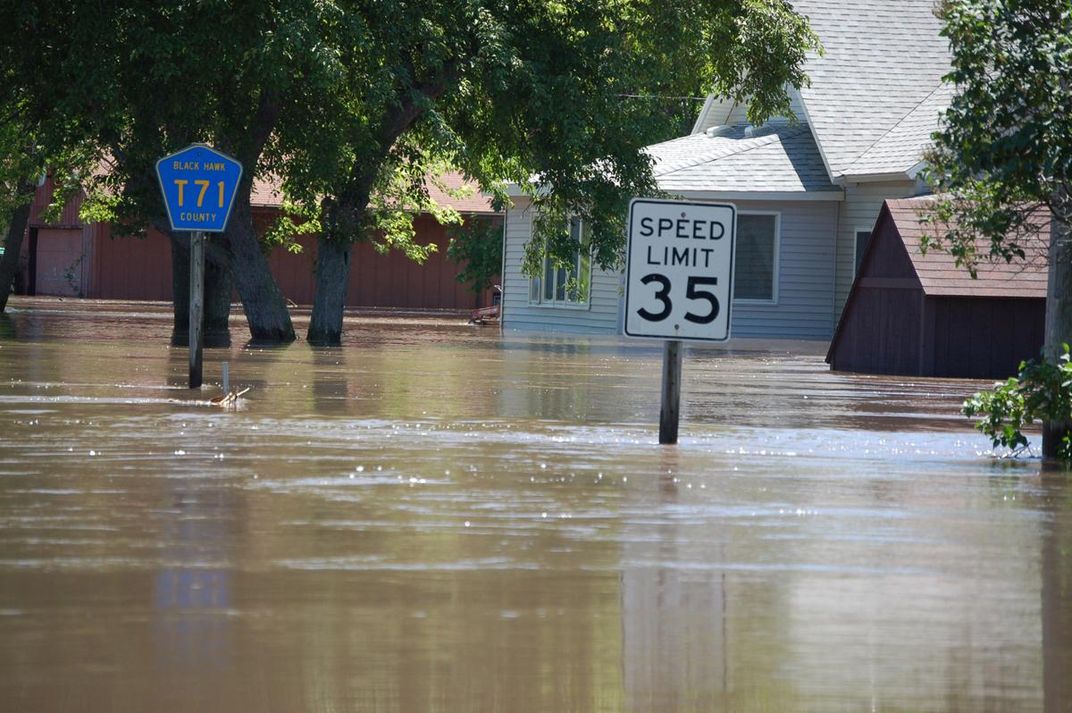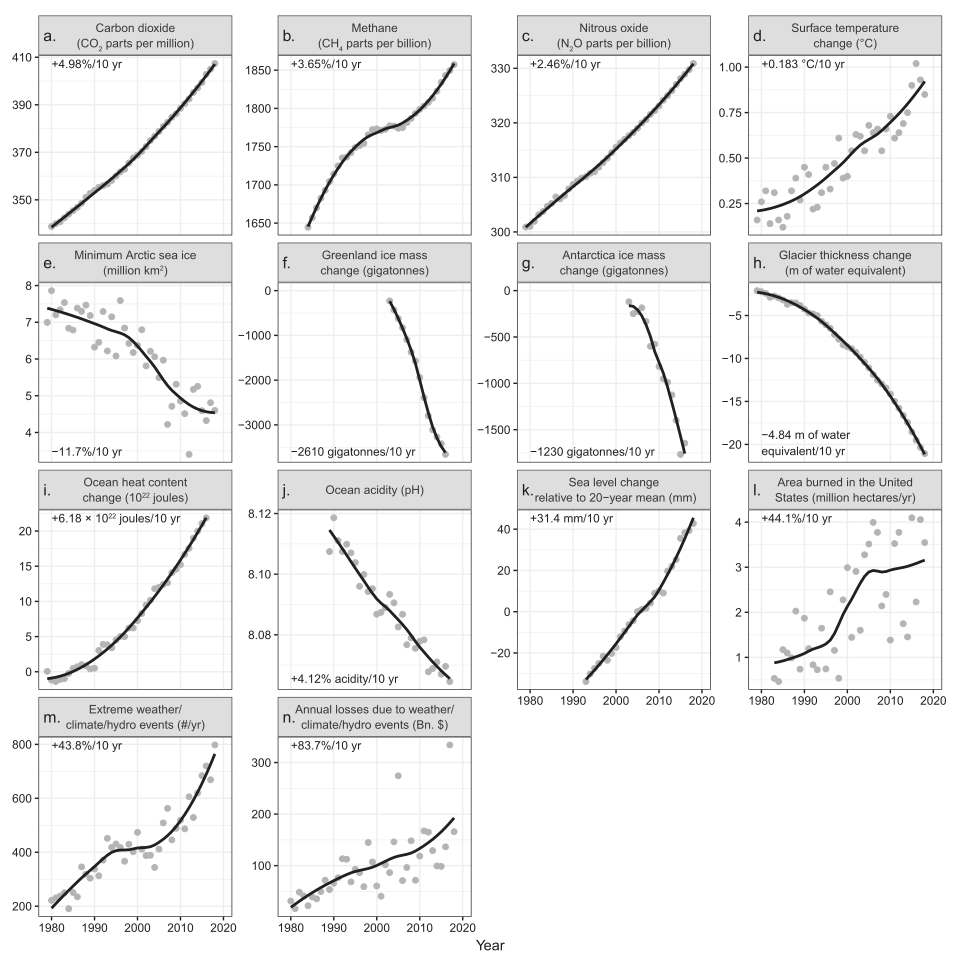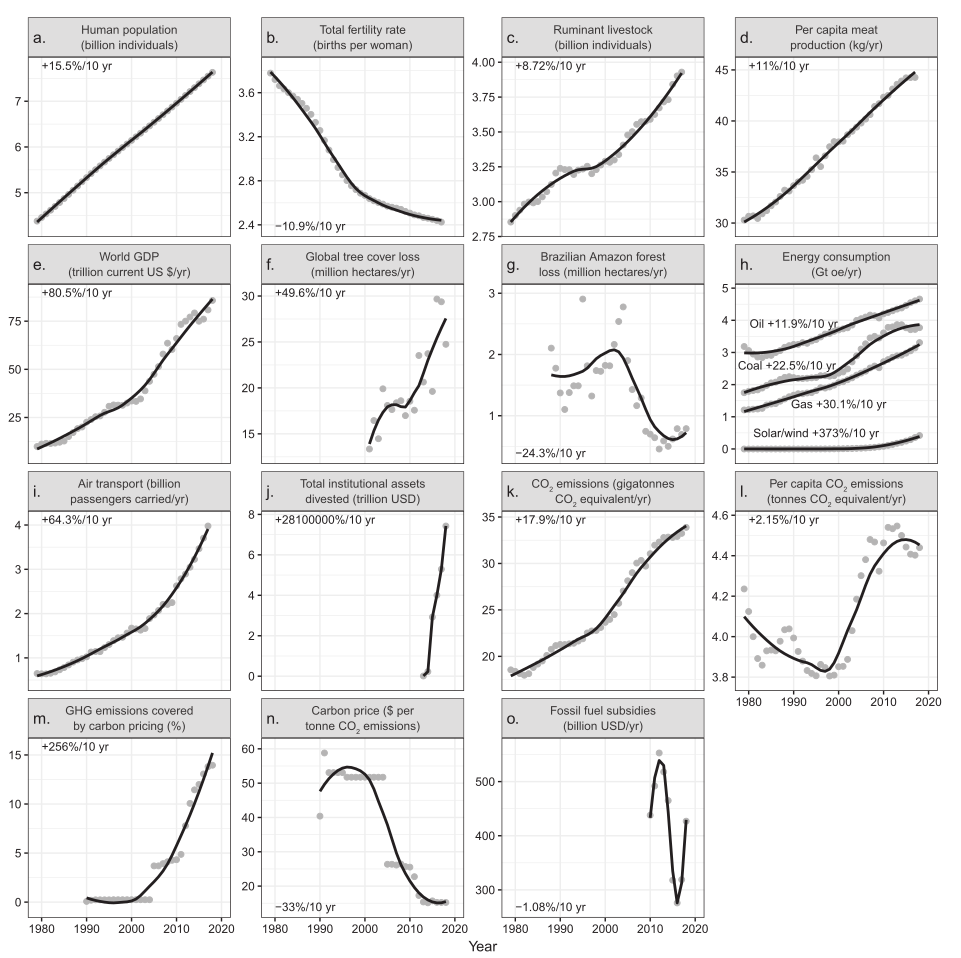Scientists Around the World Declare ‘Climate Emergency’
More than 11,000 signatories to a new research paper argue that we need new ways to measure the impacts of a changing climate on human society
/https://tf-cmsv2-smithsonianmag-media.s3.amazonaws.com/filer/f5/30/f530284f-8f0d-467d-9bad-86d51967b82f/nasamobilize.jpg)
The world’s scientists are increasingly worried about our civilization’s reluctance to tackle climate change, so in a paper released today, thousands of them are raising the alarm.
In a report published in the journal BioScience, over 11,000 of the world’s leading climate scientists have added their names to a declaration calling the planet’s current warming trends a “climate emergency.” Titled “World Scientists’ Warning of a Climate Emergency,” the paper takes an urgent tone, detailing a dire situation that will require extreme responses to avert disaster.
“As a scientist, I feel that I must speak out about climate change, since it is such a severe threat to humanity,” says Bill Ripple, an ecologist at Oregon State University and lead author of the new report. In addition to a warning about the future, Ripple, his co-authors and the 11,258 other people who attached their names to the paper suggest a set of tools to make sense of our changing world.

The paper, which looks at 40 years of climate data, argues that scientists as well as world leaders should start moving away from using a single number to track the progress of climate change: global average surface temperature. When the world’s leaders signed the Paris Agreement in 2015, that’s the number they used.
According to the Paris Agreement, if the global average surface temperature rises more than 1.5 degrees Celsius, we’ll start seeing more extreme weather events and around two feet of sea level rise. If it rises more than 2 degrees, we’ll experience significant melting of the polar ice caps, widespread desertification and severe coastal flooding. If we do nothing at all about climate change, we could see 4 degrees or more of warming, which could trigger a so-called “hothouse Earth” scenario where runaway climate effects bring us past a point of no return, resulting in a world barely habitable for humans with major population losses around the globe.
But, Ripple argues, global average surface temperature is too simple to capture the nuances of climate change. It ignores other pieces of crucial information, and it doesn’t address all the various ways our planet is transforming.
“For the average policy maker or the public, 1.5 degrees centigrade does not sound like a catastrophe,” he says. “It seems like, ‘O.K., that would be a little warmer, but not too bad.’”
But a global average increase of just a degree and a half would have nuanced and cascading effects. To address this variation, the researchers developed a suite of different metrics, including the amount of heat stored in the oceans, the masses of the polar ice caps, the economic losses sustained from extreme weather events, and the area of land covered by wildfires in the United States.

“The effects of climate change are much broader than just surface temperature,” Ripple says. By incorporating these additional metrics in the conversation, researchers hope to highlight the wide array of climate change’s affects and make them clearer to the public.
“By setting our goals with a single set of measures, we were making the climate problem more abstract,” says David Victor, a climate researcher at the Scripps Institution of Oceanography and a professor of international relations at the University of California, San Diego. “It was hard to see the progress people were making with that indicator.”
In 2015, Victor authored a paper arguing that the climate debate needed more diverse metrics. Four years later, along with a large body of additional research, this new paper outlines a different way of looking at climate change. Surface temperatures are just one indicator out of many, but regardless of what you focus on, the picture looks increasingly grim.
Over the last decade, for example, the cost of hurricanes, fires, floods, droughts and other such disasters has nearly doubled. The world is projected to spend around $200 billion on climate-related disaster relief next year. That cost is only going to go up as the Earth gets warmer.

The research team also developed a second set of metrics to track humanity’s impact on worldwide climate. “We think that to be holistic in the conversation, and for considering transformative change by society, we should track how we're behaving as humans,” Ripple says.
Dozens of measurements are included, including acreage of deforestation, world GDP, rate of population growth, and even how many cows there are around the world. Collectively, they paint a picture of a society either unaware of the damage it’s doing or unwilling to change. Still, the information is going to come in handy as scientists and leaders seek out solutions.
“You want to understand not just the impact, but also what are the levers you can pull in order to reduce that impact,” Victor says.
The research lists six steps to avoid the worst of an oncoming climate disaster. These steps fall into broad categories, such as energy, short-lived pollutants, nature conservation, food, economy and population. They range from well-known solutions like transitioning away from fossil fuels and countering deforestation to more uncomfortable tactics like slowing population growth and eating less meat.
“We're suggesting a major transformative change in the way that society functions that would promise a greater future well-being for humans,” Ripple says. “I have hope that we will do what it takes to sustain life on planet Earth.”